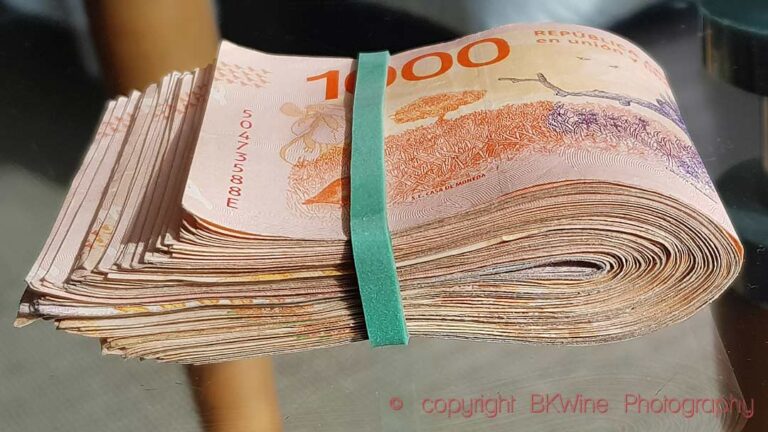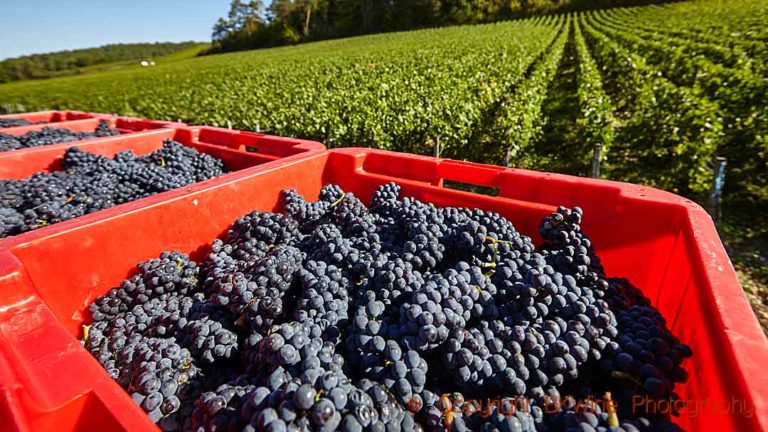The international Organisation of Vine and Wine (OIV) is possibly the world’s most important wine organisation. But it is very little known to most wine consumer. It has multiple roles, promoting and enabling scientific and commercial collaboration between wine producing countries, collecting and collating world wine statistics, enabling global rules and regulations for the sector, to mention a few of its roles. It is, one could say, a United Nations of Wine. In 2024 China joined the OIV as its 51st member country, an important step in incorporating China in the global web of wine producing countries. With this article, BKWine Magazine introduces a new contributor, Jeanne Peixian Qiao, who goes into details of the achievements of the OIV and the importance of China joining it.
When 2024 drew to a close, the OIV blew out the final candle on its centennial celebration, marking 100 years of milestones while unveiling a bold strategic vision for the next five years. This historic year welcomed the organisation’s first female president from South Africa and saw its headquarters firmly established in Dijon–a city poised to write the opening lines of the OIV’s second century. With its rich viti-vinicultural heritage dating back to the mid-19th century, when over 800 hectares of vineyards flourished, Dijon has reemerged as a vibrant hub of wine culture. Today, the city is revitalised with over 70 hectares of thriving vineyards, and a proposed new urban wine appellation, Bourgogne-Dijon, set it as a global sandbox for the future of the wine industry.
The UN of wine
Often described as the “UN of wine”, the OIV stands far removed from what General de Gaulle once derided as “so utterly useless, even dangerous.” Born amidst the turbulence of crises–phylloxera, wine fraud, Prohibition, and the aftermath of World War I–the OIV was established in the autumn of 1924 to confront the global challenges imperilling the wine industry. Now, a century later, as the industry grapples with the pressing realities of climate change and historically low production levels, the OIV stands as a pillar of resilience and a beacon of progress for the global wine community.
A cornerstone of the OIV’s enduring legacy lies in its scientific and technical heritage, meticulously cultivated and preserved over the past century. In collaboration with the University of Burgundy, the OIV has transformed its vast archives, including its acclaimed Bulletins, into an accessible digital library. This invaluable repository not only chronicles the evolution of the global wine industry but also provides an unparalleled perspective on how nations with diverse cultural and historical backgrounds have collaborated on the international stage. By examining national contexts through successive analyses contributed by a multitude of experts, these archives unveil the intricate narratives of how countries have both influenced and been influenced by the global wine sector.
Promoting collaboration and standardisation
For example, the evolution of the definition of AOC illustrates the OIV’s pivotal role. From its first resolution on the “International Protection of Appellations of Origin” in 1935 to the standardisation of labelling terms in 2021, the OIV has consistently worked to eliminate technical trade barriers, thereby streamlining international commerce.
In the 1920s, it laid the groundwork by defining what constitutes wine, fostering global market coordination. By the 1970s, it advanced winemaking practices through unified technical standards. Even during the era of Prohibition in the United States, the OIV played a key role in promoting the appreciation of wine. Through its relentless efforts, the world of wine has grown more connected than ever–transforming what once seemed like insurmountable distances into a seamless journey from vineyard to cellar.
An increasingly international industry
In 1924, over 90% of global wine consumption was concentrated in Europe, and exports accounted for just 10% of total production. Today, with the rise of New World wine countries in the Southern Hemisphere, alongside growing markets in the United States and Asia, wine production and consumption have become truly globalised. Nearly half of all wine is now consumed outside its country of origin. As OIV Director General John Barker affirms, this geographical diversification “underpins the sector’s resilience” and strengthens its ability to adapt to future challenges.
China Joins the OIV: Why Now, and Why It Matters
The OIV’s primary goal for its second century is to expand its membership while advancing sustainability. On unfortunate occasions, as demonstrated by Trump’s tariff threats and the targeting of cognac, wine has been used as a bargaining chip in international trade disputes.
Against this backdrop, the OIV welcomed China as its 51st member this November, marking a significant milestone in China’s global engagement. Yet, the Chinese authorities, tasked with ratifying the membership within one year, responded with unexpected restraint to this landmark development—a notable shift from the enthusiasm shown earlier this year.
Contrary to the common belief that the decline in the Chinese wine market was primarily driven by COVID-19, OIV data reveals that China’s wine production began a sharp downturn after peaking already in 2012, with consumption following a similar trend, steadily declining since 2017. This shift can be partly attributed to domestic policy changes, such as the reduction of “Three Public Expenses”—official hospitality, vehicles, and overseas trips—introduced in 2012. Designed to curb government extravagance and promote frugality, these measures significantly restricted the consumption of luxury goods, including wine, which was often seen as a prestige gift, particularly in sectors reliant on official banquets and military-related spending. At the same time, the rising share of direct overseas procurement and the implementation of “zero-tariff” policies triggered a rapid influx of imported wines, further compressing the market share of domestically produced wines in China.
China seeks greater recognition on the global stage, and the OIV provides an ideal platform for promoting and exporting Chinese wine. Beyond commercial interests, membership in the OIV grants access to its technical resources and unified regulations, which are critical for ensuring industry-wide quality standards. This is particularly significant for elevating the value of China’s unique local grape varieties, whether in domestic markets or competing alongside world-class products on the international stage.
With China, OIV now encompasses 85% of world vineyards
Today, China is the country with the third-largest vineyard surface in the world and stands as the leading producer of table grapes. Its inclusion in the OIV extends the organisation’s representativity to 85% of the world’s planted vineyard surface—a significant step towards enriching global scientific communication in viticulture and winemaking. “We will undoubtedly embark on more technological collaborations,” affirmed CHEN Guosheng, Science and Technology Service Counsellor at the Embassy of the People’s Republic of China in France.
China – a major wine consumption and production country
Looking ahead, this milestone will facilitate the mutual recognition of appellations of origin, simplify trade with Eastern countries, and deepen understanding of Asia’s viticultural and consumption traditions. Despite a 24.7% drop in 2023, China remains the eighth-largest wine consumer globally, with 6.8 million hectolitres consumed, and ranks second worldwide in revenue after the United States.
In this promising market, red wine continues to dominate, accounting for approximately 93% of total consumption. However, other varieties, including white wine, champagne, sparkling wines, and rosé, are increasingly capturing the attention of younger generations, who crave global diversity and personalisation in their wine choices.
With the OIV serving as a bridge to educate the Chinese market and introduce wine into daily life and social settings, one can easily envision the emergence of a more mature market—a blue ocean (*) of opportunities for the global wine industry.
–
(*) Ed.: “Blue Ocean” is an expression coined by two INSEAD professors, W Chan Kim and Renée Mauborgne, in their 2005 book “Blue Ocean Strategy” on how companies can create and capture “blue oceans”, unexplored new market areas. INSEAD is one of the world’s leading business schools, based in Fontainebleau.














